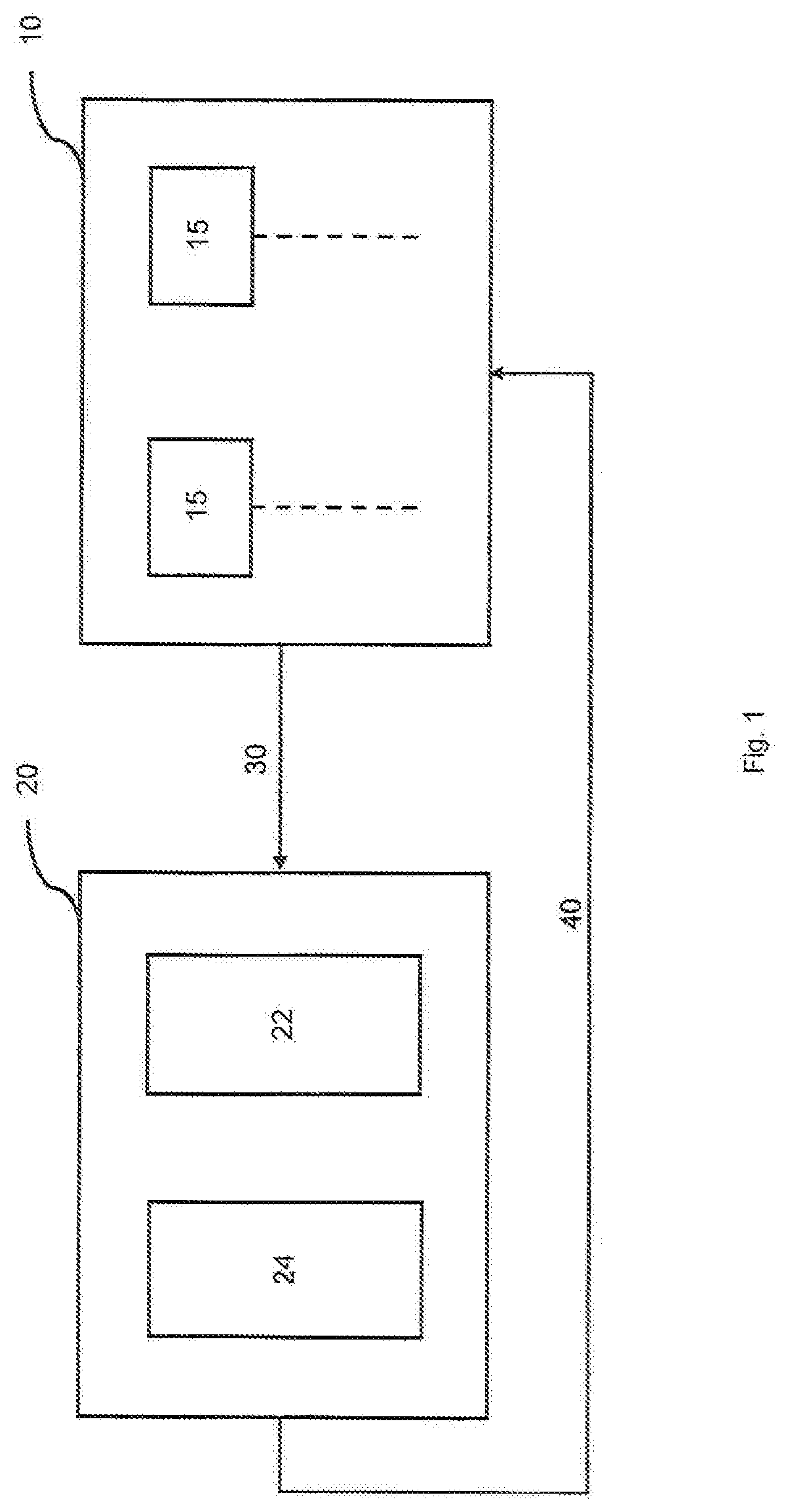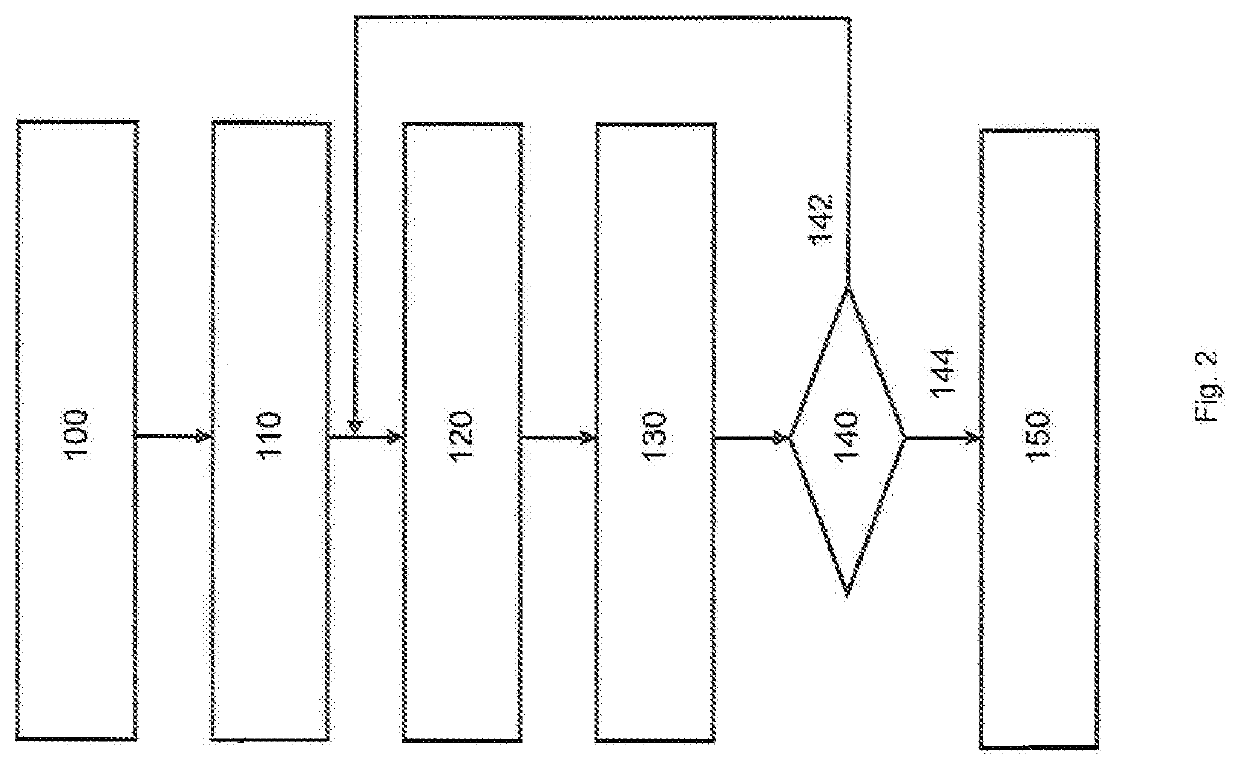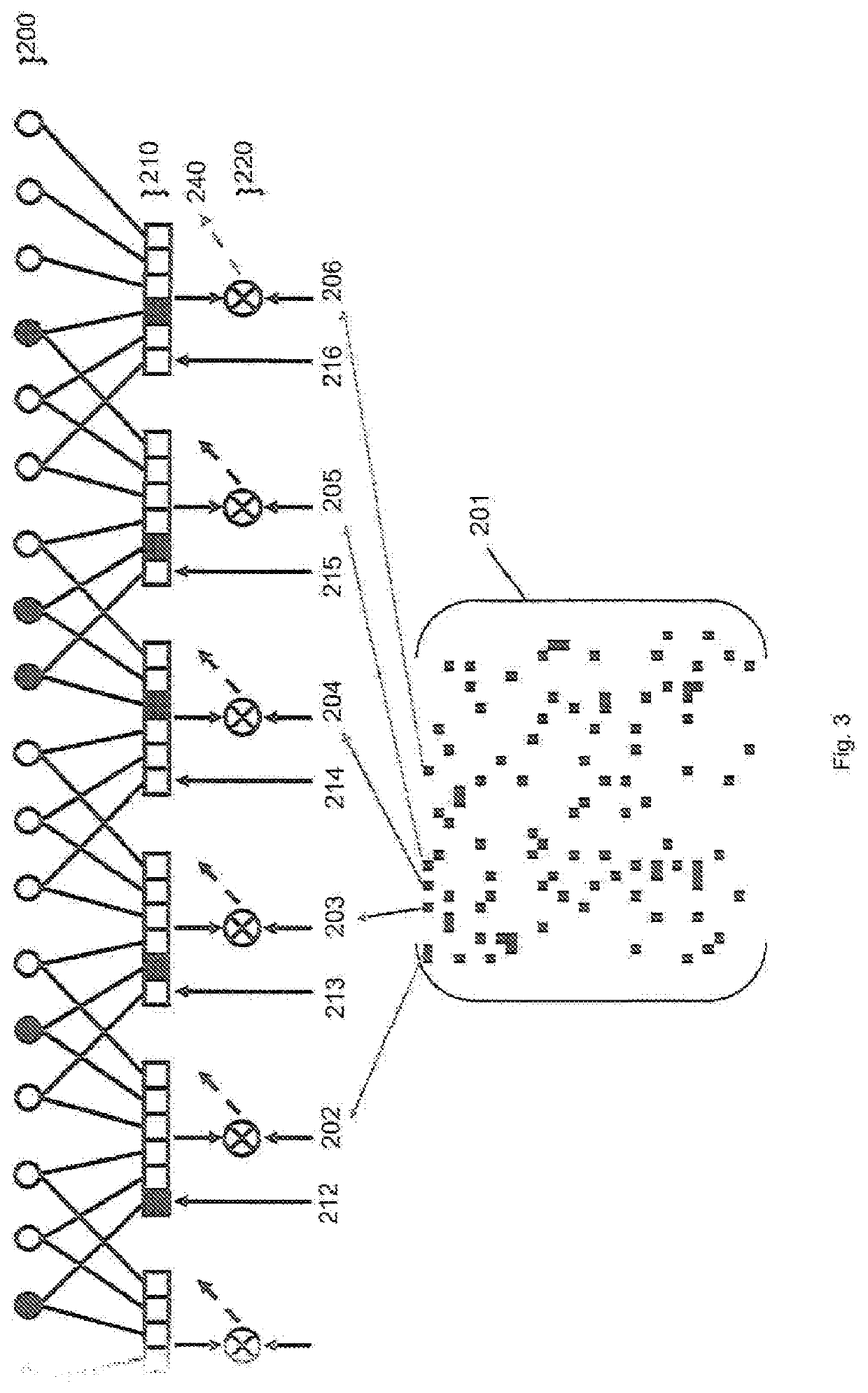Processing Matrix Vector Multiplication
a matrix vector and multiplication technology, applied in the field of processing matrix vector multiplication, can solve the problems of large challenge, similar problems may exist in other hardware systems, and relatively simple problems, so as to reduce the size of the biggest memory block and improve processing speed.
- Summary
- Abstract
- Description
- Claims
- Application Information
AI Technical Summary
Benefits of technology
Problems solved by technology
Method used
Image
Examples
Embodiment Construction
[0027]In a general sense, matrix vector multiplication of the disclosure may consider a matrix of size M×N (that is, M rows and N columns) and a vector of size N (that is, N rows and a single column). The matrix is a sparse matrix including a zero values. Preferably, the density of the sparse matrix is at least 1%. The density of the matrix is no more than or optionally less than 40% (60% sparsity), typically no more than (or less than) 30% (70% sparsity) or 20% (80% sparsity) and more preferably no more than (or less than) 10% (90% sparsity) or 5% (95% sparsity). A density of between 5% and 15% is most preferred, with 6.25% and (less preferably) 12.5% being possible more optimal values.
[0028]Referring first to FIG. 1, there is shown a schematic block diagram of a computing system, which can be implemented in accordance with the disclosure. This implementation focuses on an FPGA system, but alternative systems using a similar or equivalent configuration can be considered. The comput...
PUM
 Login to View More
Login to View More Abstract
Description
Claims
Application Information
 Login to View More
Login to View More - R&D
- Intellectual Property
- Life Sciences
- Materials
- Tech Scout
- Unparalleled Data Quality
- Higher Quality Content
- 60% Fewer Hallucinations
Browse by: Latest US Patents, China's latest patents, Technical Efficacy Thesaurus, Application Domain, Technology Topic, Popular Technical Reports.
© 2025 PatSnap. All rights reserved.Legal|Privacy policy|Modern Slavery Act Transparency Statement|Sitemap|About US| Contact US: help@patsnap.com



